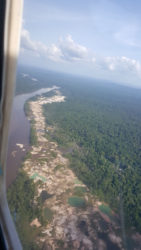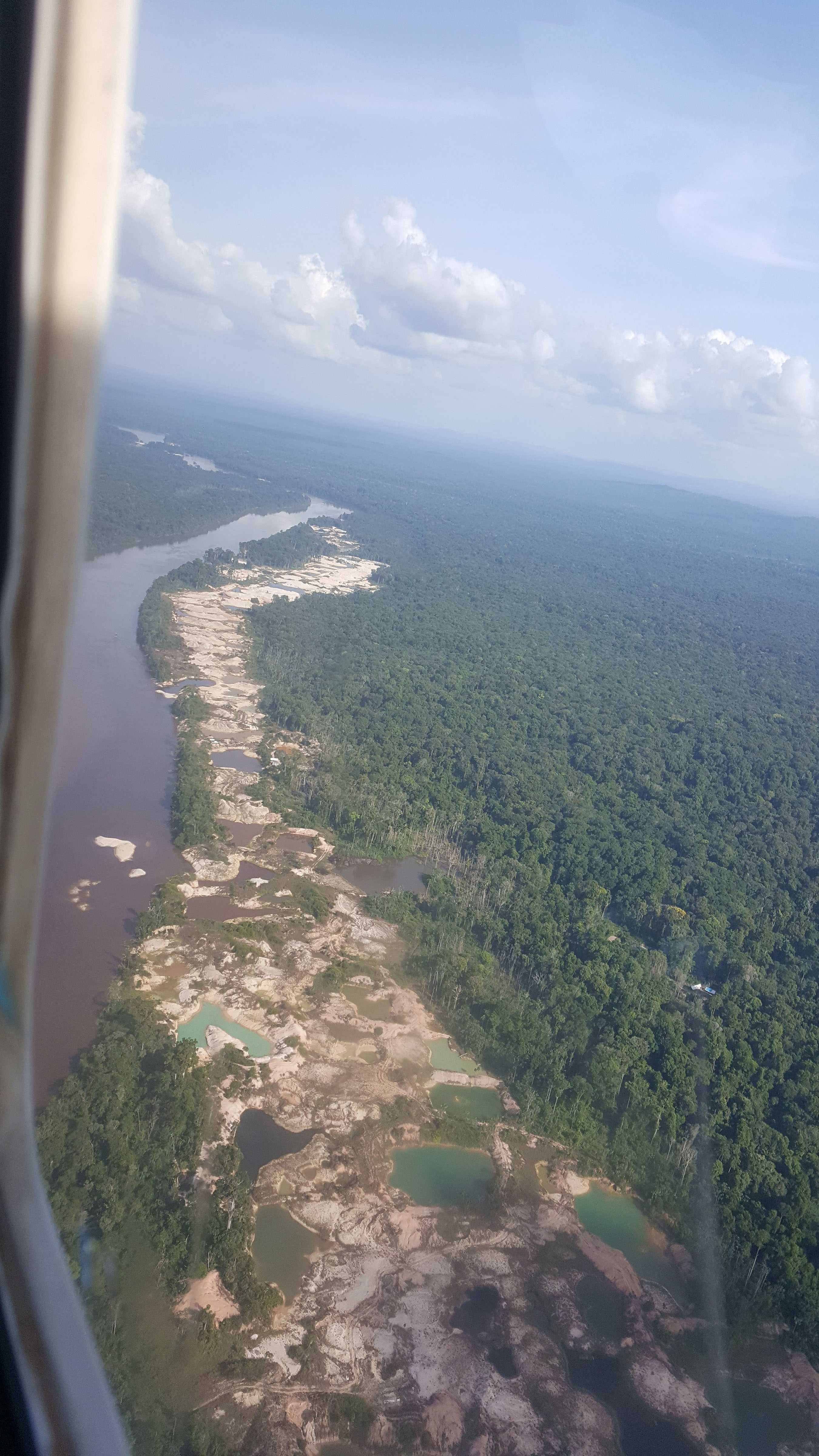Dear Editor,
On Monday, October 17, 2016 I informed the relevant regulatory and enforcement agencies of the serious degradation being done to the banks of the Potaro and Essequibo Rivers between Tumatumari and Omai as a result of irresponsible gold dredging activities. I submitted the photographic evidence and was informed that action will be taken to deal with obvious breaches of the regulations.
On Sunday, November 27, 2016, while on an aerial reconnaissance over Regions 7 and 8, I observed that the indiscriminate mining of river banks and also the dumping of tailings in the channels were not confined to the Potaro and Essequibo Rivers, but were taking place in the middle Cuyuni (just below the confluence of the Ekereku River with the Cuyuni River), in the Wenamu River (on both the Guyana and Venezuela banks), in the Ekereku River (opposite the Ekereku Airstrip), and in the middle Mazaruni River (below Tamakay Landing). The situation in the Potaro and Essequibo Rivers has also worsened as seen in the accompanying photographs of mining activities on the right and left banks of the Potaro River and on the left bank of the Essequibo River by Omai Landing.

Another photograph also shows the heavy sediment loading of the Cuyuni River (from the cumulative impact of mining activities in the upper Cuyuni located in Venezuela, and in the middle and lower Cuyuni River in Guyana) at its confluence with the Mazaruni River by Kartabu Point.
Surely, the regulatory and law enforcement agencies, some of which actually have personnel deployed within striking distance of the impacted areas, cannot be unaware of these breaches.
Added to the mining illegalities are the build-up of detritus (human waste and abandoned mining camps and equipment), indiscriminate dumping of tailings proving to be hazards to navigation in the rivers, deterioration of the quality of fresh water for downstream communities, and the degradation of aquatic life.
The impacts of the mining activities on river banks such as on the left bank of the Cuyuni River below Ankoko Island, and on the river channel of the Wenamu River also have strategic implications as these apply to the delineation of the international border.
The contribution of the gold mining community to the development of Guyana and Guyanese is undeniable. The pioneering efforts, courage, risk-taking and technological advances initiated by miners and services providers in the mining sector, are to be applauded. However, mining operations in our rivers or contiguous land areas have to be compliant with the regulations, including those relating to the health and safety of mining crews and downstream communities and for the sustainability of ecosystems and services.
I had reported to the authorities on aberrations in the gold mining operations in our rivers and contiguous land areas six weeks ago. I have not seen any evidence of any reduction of these breaches but more alarmingly, I have witnessed the escalation of breaches and on a much wider scale.
Through this medium, I am appealing to the mining community, the regulatory and enforcement agencies and the affected communities to work collaboratively to put a stop to this madness which, if unchecked, will contradict our efforts at sustainable development through a green economic pathway, compromise our stewardship of Guyana’s natural capital, and undermine the integrity of our legacy to future generations.
Joseph G Singh
Major General (retd)
ii’iv

